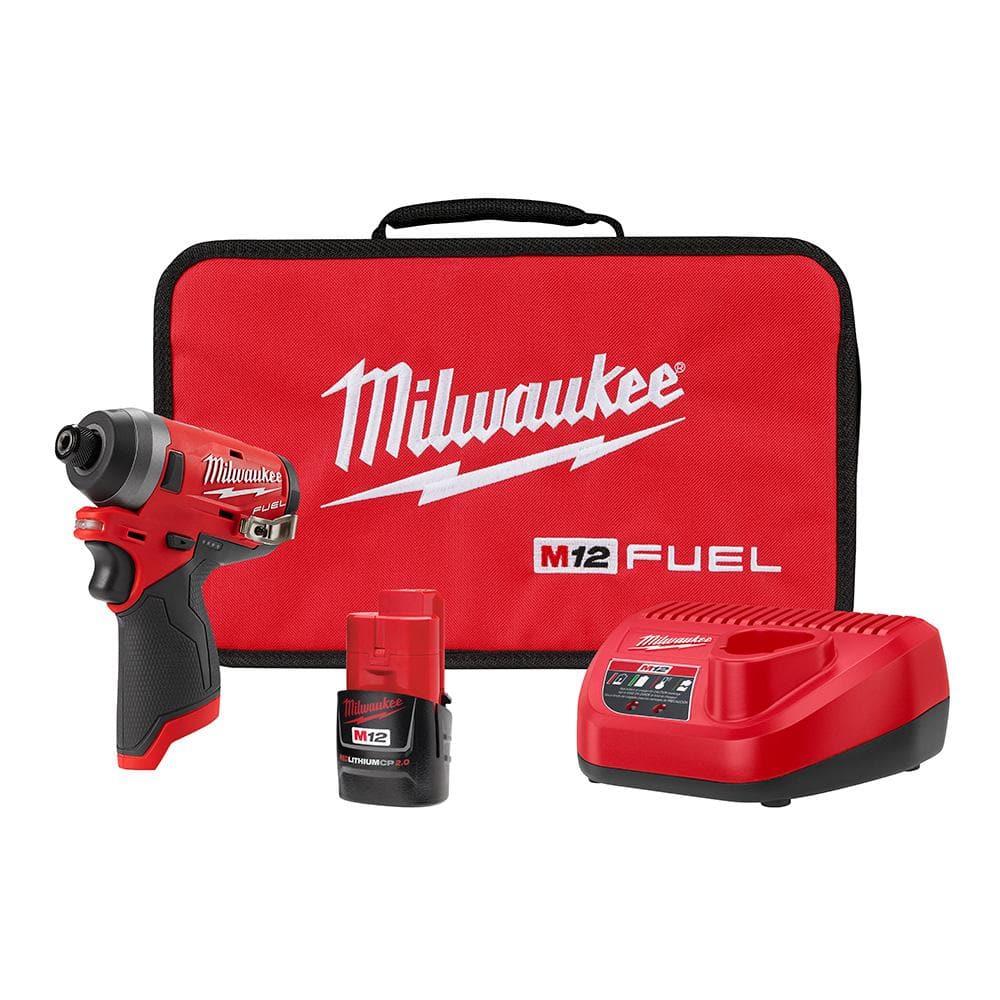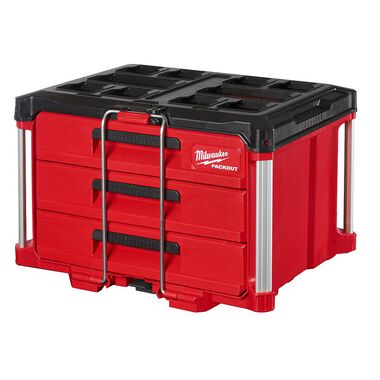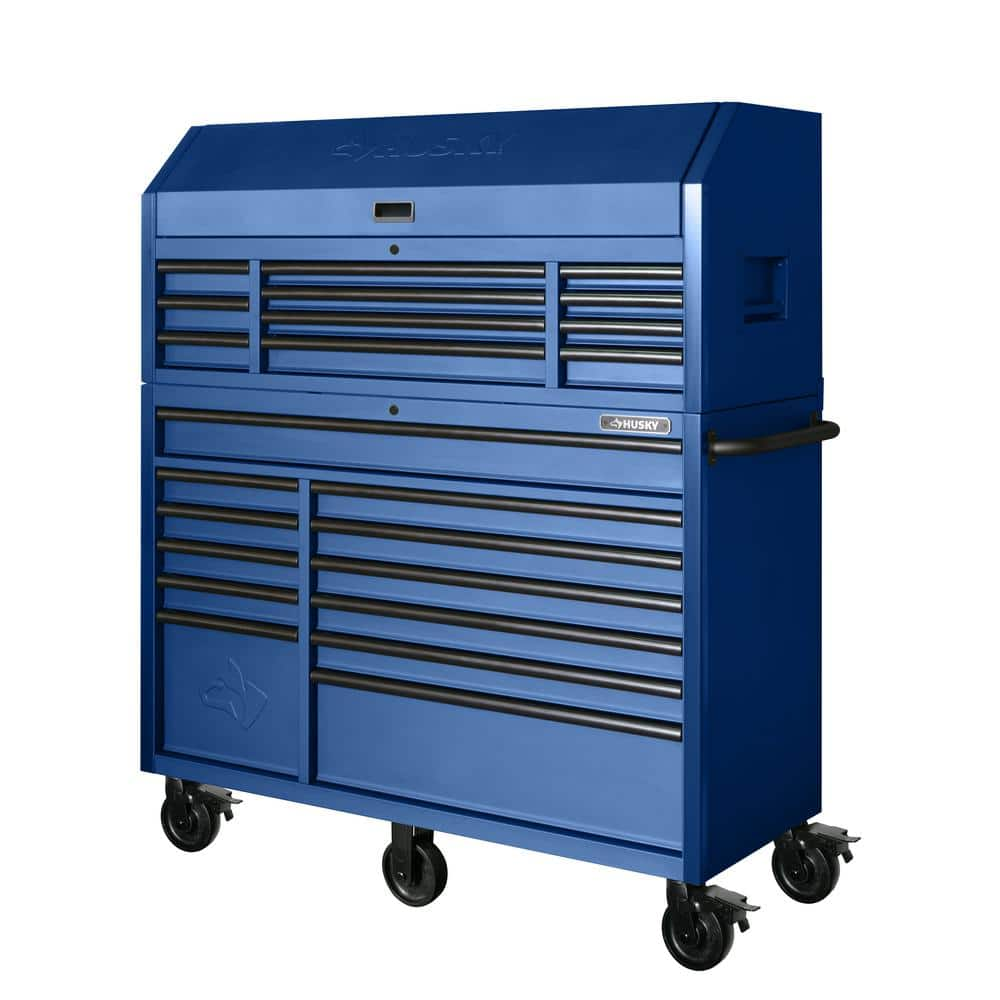Milwaukee M12 FUEL 12-Volt Lithium-Ion Brushless Cordless 1/4 in. Hex Impact Driver Kit with One 2.0 Ah Battery, Charger and Bag
Over 20% faster in application speed vs. the competition. Part of the M12 System, featuring over 100+ tools. (2553-20): Brushless Motor delivers 1,300 in. lbs and 0-3,300 RPM.
The Milwaukee M12 FUEL 1/4 in. Hex Impact Driver offers the best in class driving speed, power, and size. This impact driver gets the job done faster by being over 20% faster in application speed versus the competition and delivering over 1,300 in. lbs. of torque, allowing the user to be more productive by completing a wide range of fastening. This Milwaukee hex impact driver is only 5.1 in. L for unmatched access in tight spaces. The 4-Mode DRIVE CONTROL provides greater control over output speed and power for greater versatility by delivering 0 RPM to 1,300 RPM in Mode 1, 0 RPM to 2,400 RPM in Mode 2 and 0 RPM to 3,300 RPM in Mode 3. Mode 4 is a Self-Tapping Screw Mode designed to reduce walking when starting self-tapping screws as well as reduce overdriving, breaking, and stripping out screws. The 1/4 in. Hex Impact Driver features a POWERSTATE Brushless Motor that delivers up to 0 RPM to 3,300 RPM with constant power output to drive screws faster. Milwaukee’s REDLINK PLUS Intelligence is the most advanced Electronic system on the market, preventing damage to the tool and battery caused by overloading or overheating. This kit also includes an M12 compact battery and a charger.
- 2553-20: 4-mode drive control
- 2553-20: most compact
- 48-11-2420: REDLINK intelligence: provides optimized performance and overload protection using Total system communication between tool, battery and charger
- 48-11-2420: all-weather performance: delivers fade-free power in extreme jobsite conditions
- 48-59-2401: charge management: charger communicates with the battery pack to ensure a full charge and battery protection
- Includes: 1 M12 FUEL impact driver 2553-20, 1 M12 2.0 Ah compact battery 48-11-2420, 1 M12 charger 48-59-2401, 1 contractor bag 42-55-2551, 1 belt clip
Additional information
| Product Depth x Height x Width (in.) | 4.09 x 9.13 x 15.08 |
|---|---|
| Certifications and Listings | UL Listed |
| Manufacturer Warranty | 5 Year Tool & 2 Year Battery Warranty |






by Anthony
I owned the original version 1 of this M12 impact driver and loved it! It was one of my most used tools. I framed/sheathed my whole 16×20′ garage with 2×4’s and plywood using just this driver. I chose this over the M18 because of its weight to power. It’s light and easy to use above your head or in a cabinet, but has plenty enough power to drive the smaller screws and fasteners I typically use. If I was constantly driving lags or bigger fasteners, I might have thought about grabbing the M18 driver, but this has definitely worked out great for me. One of my most used tools by far!
by Kim
Absolutely amazing tool get it you will not be sorry.
by Brandon
This is great drill so far. I have not got to really give it a good test but it’s been great for light around the house use so far. Only issue I have is the markings in the battery slot. I bought what was supposed to be a brand new drill and there is marking some almost like initials but I can’t make them out. I’ve heard other people say the same so maybe it’s something they do in manufacturing. I’d love to know.
by Elena
I bought two. They’re light, small and tough. Short burst power’s comparable to my M18 brushless drill driver on 12-14 and 90% reduction in PH screw head strips, (some screws are just cheap). Working as an assembler, I put the sockets on the M18s and PH bits on the M12s, except I use the M18 impact for picnic table screws (PH 8-2.5″). The M12 impacts look cute but they play big.
by Rick
Great little impact wrench. I love the size and the power. I always try to grab for this one to use. I will definitely recommend this tool to friends and family.
by Lile
Liked my Old hex drill, But LOVE MY NEW DRILL!!!! Didn’t know about Speed/Toque settings on it before I Bought it. Do Now!! LUV IT! Can set it to whatever setting that works best and GOT IT at a GREAT PRICE.
by Eddie
I love this drill. It’s compact and very light. Great power too.